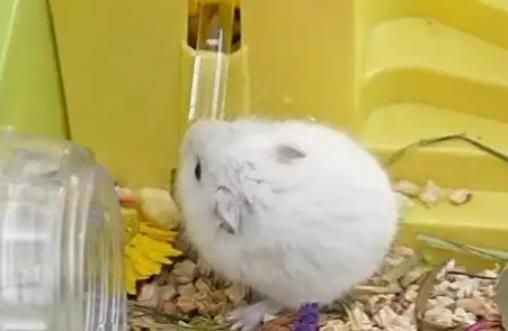The care of dwarf hamsters mainly includes aspects such as the living environment, diet management, daily care, and health monitoring.

Living Environment
Cage Selection: The bottom area of the cage for dwarf hamsters should be at least 40cm × 30cm, and a multi-layer design is recommended for the height. In terms of material, avoid using wire cages. Instead, choose acrylic or special plastic cages, and make sure the gaps are not too large. Ensure good air circulation, but avoid direct drafts or exposure to the sun.
Bedding and Cleaning: The thickness of the bedding should be 5 to 10 centimeters. Dust-free wood shavings (such as poplar wood shavings) and paper cotton are recommended. Do not use bedding materials like pine and fir that contain phenolic substances. Clean the wet areas due to urine every day, replace half of the bedding every week, and thoroughly disinfect the cage every month.
Diet Management
Choice of Staple Food: You should buy branded hamster food and avoid giving human snacks or foods high in sugar. The staple food should include grains, seeds, and proteins (such as mealworms and boiled egg whites).
Snacks and Taboos: You can feed carrots, broccoli, apples (with the core removed), oatmeal, etc. Toxic foods such as chocolate, onions, garlic, citrus fruits, and raw beans are strictly prohibited.
Drinking Water: Replace the cooled boiled water every day and use a water bottle with a ball to prevent contamination.
Daily Care
Hygiene Habits: Provide special bath sand for the hamsters to roll around and clean themselves; there is no need to wash them with water. Prepare apple branches, molar stones, or mineral blocks to prevent their teeth from growing too long.
Exercise and Interaction: The diameter of the running wheel should be at least 17cm. Avoid using wire running wheels to prevent foot injuries. Cultivate trust by offering food by hand. When gently picking up the hamster, avoid grabbing its ears or tail.
Noise Control: Place the cage in a quiet place, away from areas near the TV and audio equipment.
Health Monitoring
Common Diseases: These include wet tail (diarrhea), cheek pouch inflammation, etc., and it is necessary to seek medical treatment in a timely manner. Keep the cage dry and avoid feeding sticky foods.
Abnormal Signs: A decrease in appetite, messy fur, rapid breathing, slow movement, etc. require timely inspection.
